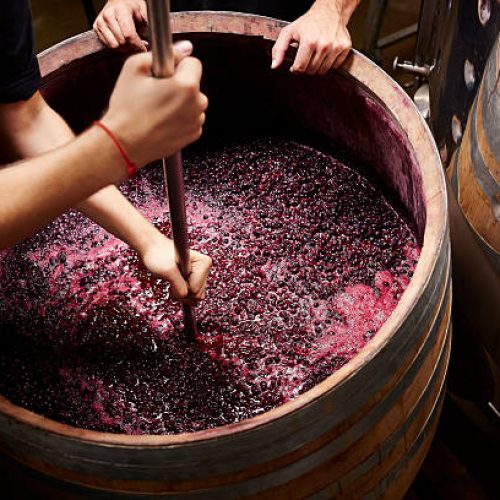Project Report For Wine Manufacturing Plant
Introduction
Project report for Wine Manufacturing Plant is as follows.
Winemaking, also known as vinification, is the process of making wine that begins with the selection of the fruit and ends with the bottling of the completed beverage. Wine making has been practised for millennia. The science of wine and winemaking is known as oenology. A vintner is another term for a winemaker. Viticulture is the cultivation of grapes, and there are numerous grape varietals.
There are two types of wine making: still wine production and sparkling wine production. Red wine, white wine, and rosé are the other major classifications. Although most wine is derived from grapes, it can also be made from other plants. Other related light alcoholic drinks include mead, which is created by fermenting honey and water, apple cider, which is made by fermenting apple juice, pear cider, which is made by fermenting pear juice, and kumis, which is made of fermented mare’s milk.

Process Of Wine Manufacturing Plant
Harvesting: Grapes are picked when they have achieved their optimum maturity. Typically, they are collected by hand or machine and delivered to the winery for additional processing.
Crushing and Destemming: The grapes are crushed to get the juice. The grapes are generally destemmed in red wine production to separate the grape berries from the stems, although white wines may include the stems for extra flavour.
Fermentation: The juice is placed in fermentation containers, along with the grape skins and, in certain cases, the stems. Red wine is often fermented with the grape skins to extract colour, tannins, and flavour ingredients. White wines can be fermented without the skins. Yeast is introduced to start the fermentation process, which converts the natural sugars in the grapes into alcohol.
Pressing: After fermentation, the grape solids (such as skins and stems) are removed from the liquid. In the manufacture of red wine, this is often accomplished by a procedure known as pressing. White wines may be gently pressed before or after fermentation to obtain more juice.
Maturation and ageing: After pressing, the wine is put to barrels, tanks, or other containers for ageing and maturation. This stage allows the wine to develop rich flavours, aromas, and texture through interaction with oak barrels, lees (sediment), and air.
Clarification and Filtration: The wine may be clarified and filtered to eliminate any leftover particles, sediments, or contaminants. This contributes to the wine’s purity and stability.
Blending: To achieve desired flavour profiles and consistency, winemakers may blend wines from various grape types or vineyards in some circumstances.
Bottling: Bottling occurs after the wine has finished the ageing and clarifying processes. Typically, the wine is transferred to bottles, corked or sealed, and labelled for distribution.
Market Potential Of Wine Manufacturing Plant
In 2022, the worldwide wine production machinery market was estimated to be worth USD 2,325.4 million. It is expected to reach USD 3,338.5 million by 2031, increasing at a CAGR of 4.1% between 2023 and 2031.
The growth of wineries is one of the primary reasons driving the global market for wine production machinery. Over the last few years, consumer demand for wine has soared. Furthermore, millennials are more adventurous with their preferences, perceptions, and consumption patterns for specific alcoholic beverages, such as wine, champagne, and beer, as compared to baby boomers. As a result, the increased consumption of wine creates unexplored chances for significant businesses to construct or expand their facilities.
The market for wine production gear confronts several challenges, but the most significant remains the high cost issue. The fermenter, for example, relies on complicated mechanics with real-time monitoring and employs a variety of equipment such as sensors, actuators, and spargers.
For optimum performance, a fermenter also includes foam controls, temperature and pH sensors, baffles, an inoculation port, drainage systems, and impellers. Because a sterile atmosphere and optimum circumstances are critical for microbial cultivation, fermenter equipment is exceedingly precise, accurate, and complex, adding to the fermenters’ expenses.
Project Report Sample On Wine Manufacturing Plant
Need Help?
Create 100% Bankable Project Report

